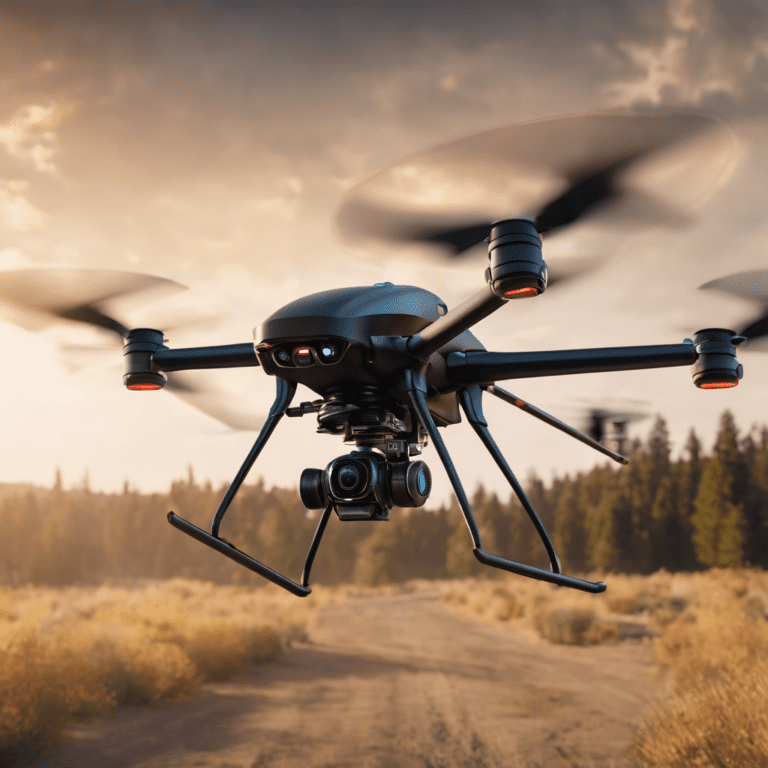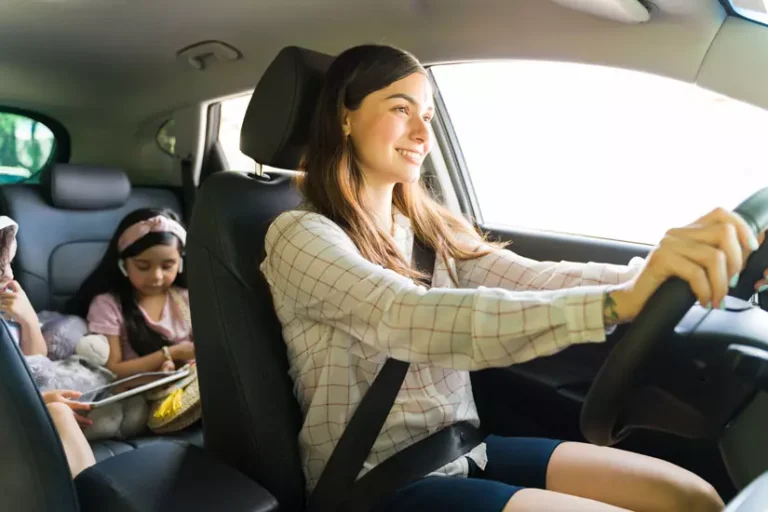How Long Can a Police Drone Stay in the Air? A Comprehensive Guide for 2023
The advent of drone technology has revolutionized numerous sectors, and law enforcement is no exception. Police drones, also known as Unmanned Aerial Vehicles (UAVs), have become essential tools for modern police work, aiding in tasks ranging from search and rescue missions to monitoring large gatherings and surveying crime scenes. Their versatility, efficiency, and cost-effectiveness have made them indispensable for various applications. However, one of the most common questions that arise when discussing these aerial devices is their flight duration.
How Long Can a Police Drone Stay in the Air?
On average, most police drones can remain airborne for about 20 to 30 minutes. The exact flight time varies depending on several factors, such as the drone’s battery capacity, its design, and the operational conditions it faces. While this might sound brief, advancements in drone technology continue to push these limits, offering law enforcement increased time in the air and more extended operational capability.
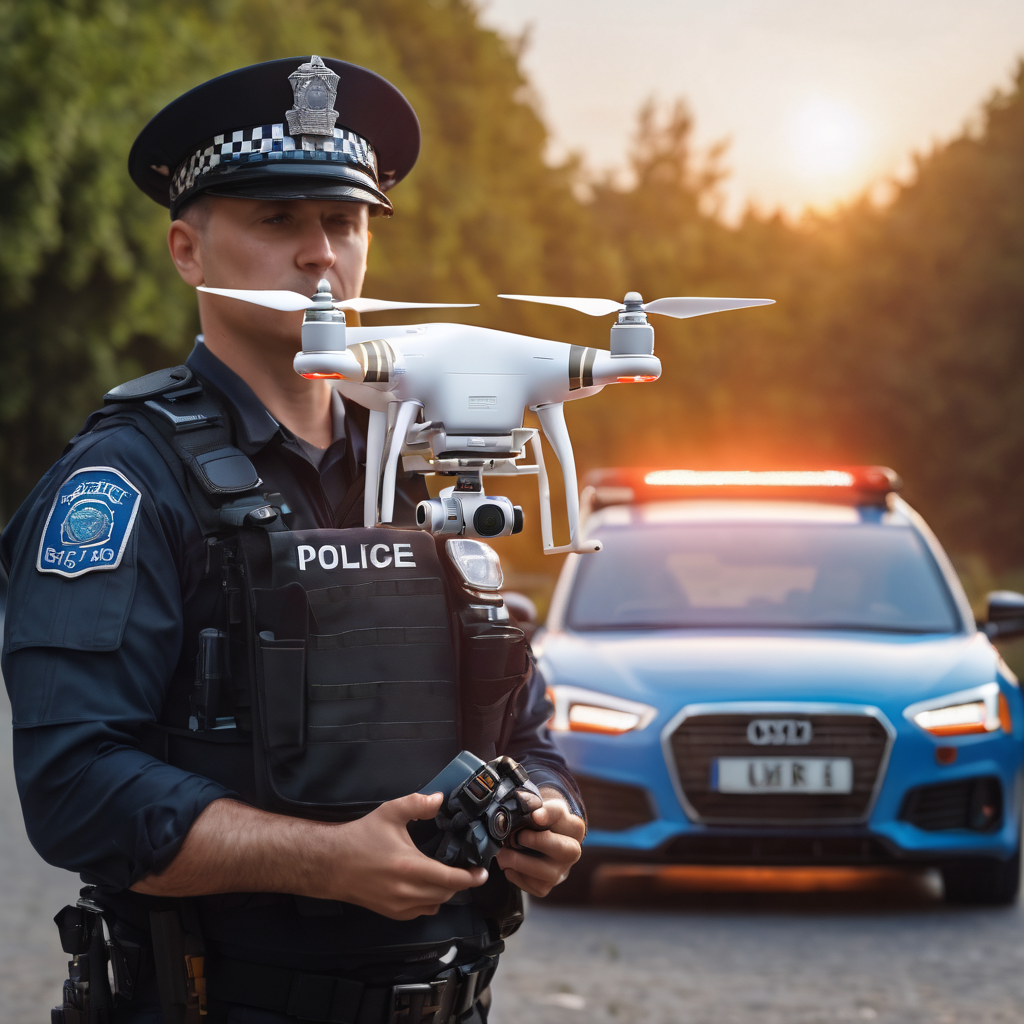
Understanding the Basics of Police Drones
What is a police drone?
A police drone is essentially a UAV employed by law enforcement agencies to support their operations. Built with advanced cameras and sensors, these drones offer a bird’s-eye view of areas that might be challenging or unsafe for officers to access directly. Their remote-operated nature ensures that surveillance or investigative tasks can be conducted with minimal risk, all while providing real-time data to the ground team.
History and evolution of police drones
The use of drones in police work is not a new concept. Initially developed for military applications during the early parts of the 20th century, drones have undergone significant transformations in design, size, and functionality. It wasn’t until the early 2000s that law enforcement agencies started recognizing the potential of drones in bolstering their capabilities. From rudimentary designs with limited flight times and basic imaging, modern police drones now come equipped with thermal imaging, night vision, and even facial recognition capabilities. Their evolution continues to be fueled by technological advancements and the growing needs of law enforcement agencies globally.
Benefits of Drones in Law Enforcement
The integration of drones into the realm of law enforcement has brought about several undeniable benefits:

Rapid deployment and response
Drones can be launched within minutes, enabling immediate aerial coverage. In situations where time is of the essence, such as a missing person case or a fleeting suspect, drones provide officers with instant eyes in the sky, significantly enhancing response times.
Efficiency in night operations
Equipped with infrared and night vision capabilities, police drones have transformed nocturnal operations. They can effectively monitor dark alleys, vast fields, or dense woods, areas that would typically pose visibility challenges during nighttime.
Cost-effectiveness
Manned aerial operations, such as helicopters, can be costly in terms of fuel, maintenance, and personnel. Drones, on the other hand, offer a more affordable alternative without compromising on the quality of surveillance.
Risk reduction
Sending a drone to inspect potentially dangerous areas, like rooftops or inside buildings, minimizes the risks that officers face. In situations like hostage crises or bomb threats, drones provide a safer method of assessment.
Enhanced efficiency
With the ability to cover large areas swiftly, drones can search expansively and thoroughly. They can also provide real-time feedback, allowing for dynamic decision-making on the ground.
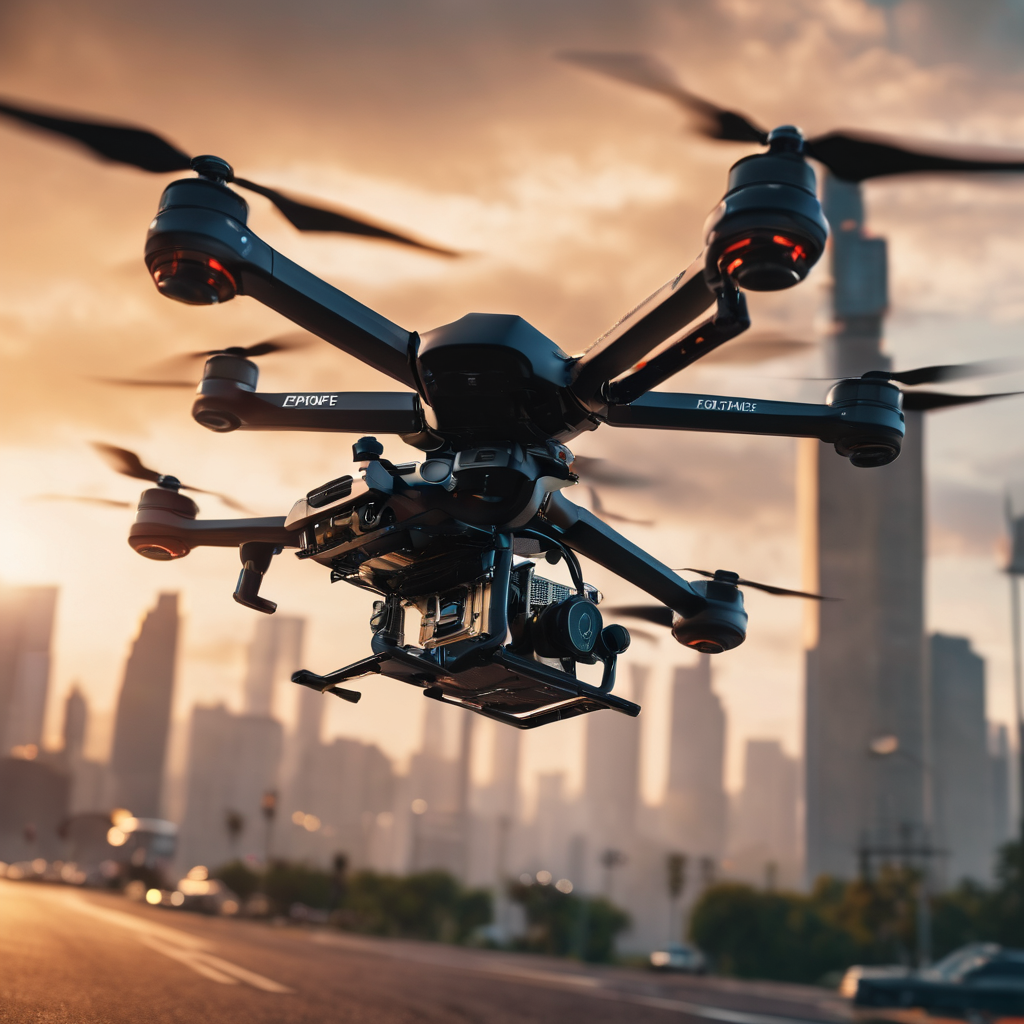
Application of Police Drones in Various Operations
Police drones have become integral in a range of operations:
Search and rescue missions
In instances of missing persons in vast, rugged terrains or dense forests, drones provide a swift and exhaustive search method. Their aerial vantage point helps locate individuals faster than ground teams might, especially when equipped with thermal imaging.
Traffic accident investigations
After a severe traffic collision, drones can be employed to capture aerial photographs of the scene. This not only helps in the reconstruction of events leading up to the accident but also provides invaluable evidence for legal proceedings.
Crime scene reconstructions
Aerial shots of crime scenes give investigators a comprehensive view of the area, aiding in understanding the sequence of events and spatial relationships of various elements.
Tracking suspects
In chases, drones can track fleeing suspects from above, ensuring they don’t evade police while also reducing the risks associated with high-speed pursuits on the ground.
Natural disaster responses
Following natural calamities like floods, earthquakes, or hurricanes, drones can be deployed to assess the extent of damage, locate stranded individuals, or determine safe routes for rescue teams.
Surveillance and crowd monitoring
For events with large gatherings or potential public disturbances, drones offer an effective means of crowd control and monitoring, ensuring public safety and order.
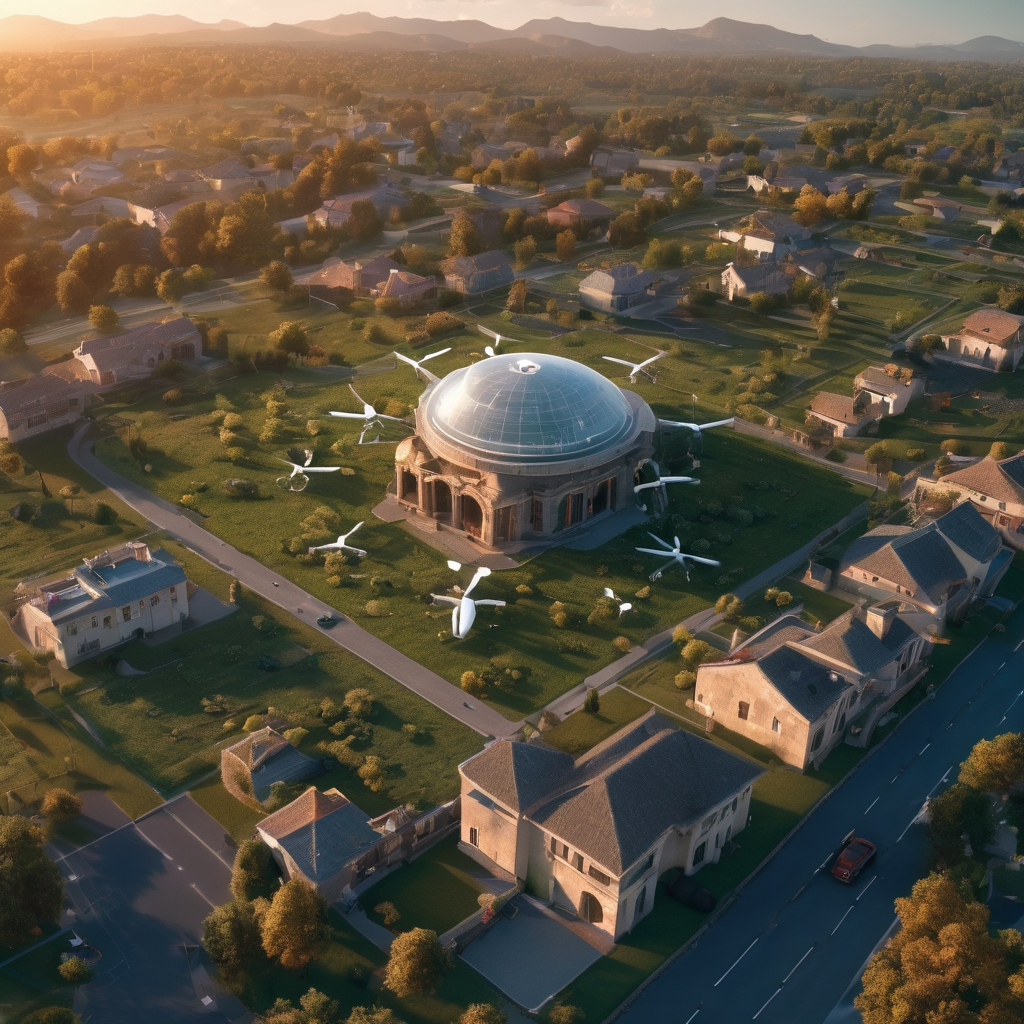
Key Police Drones in 2023
Drones have seen vast improvements over the years, and 2023 is no exception. Some leading police drones include:
- JOUAV CW-30E VTOL Drone: Known for its impressive flight time and advanced imaging capabilities.
- DJI Mavic 2 Enterprise Advanced: A favorite among many departments due to its reliability, compact size, and cutting-edge camera system.
- Autel EVO II Dual 640T Enterprise: Prized for its dual-camera setup offering both visual and thermal imaging in one package.
Each of these drones has unique features tailored to various law enforcement needs.
Factors Determining Flight Duration
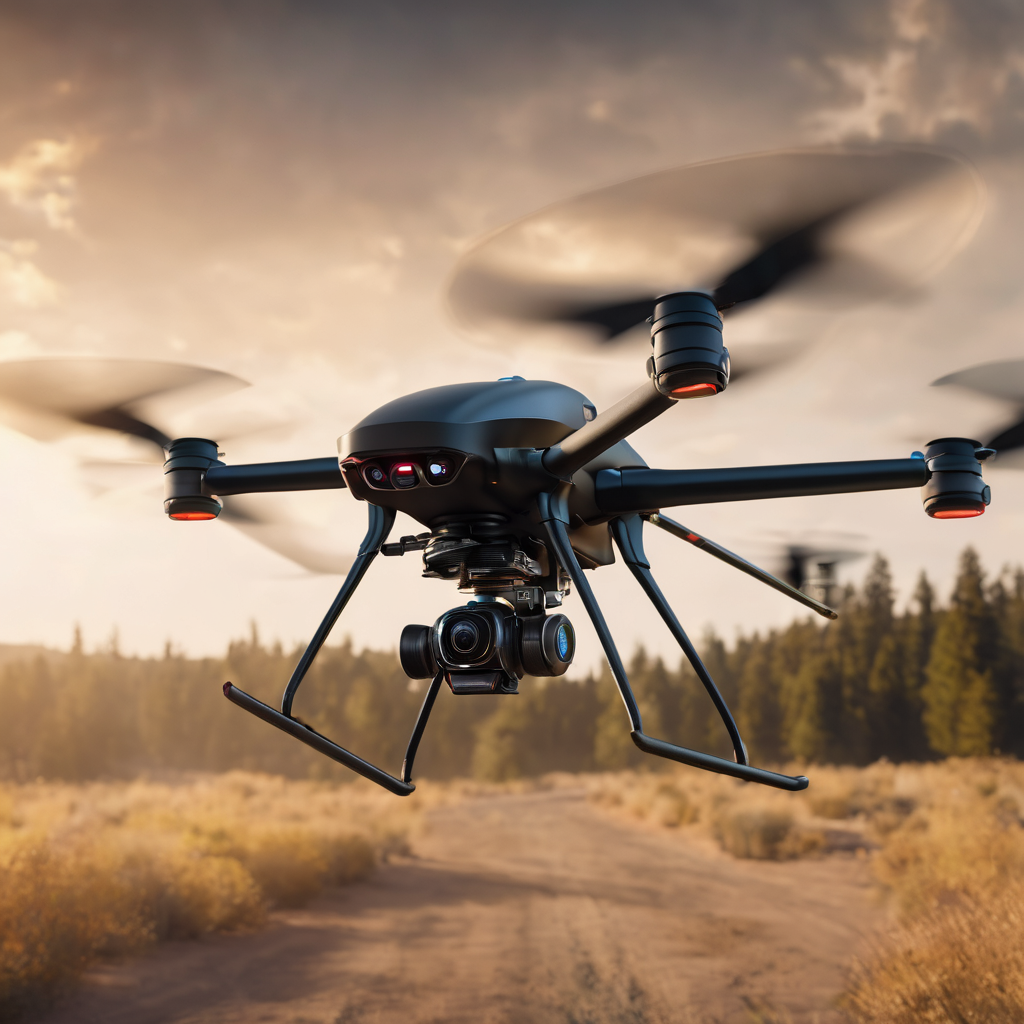
While the general flight time of a police drone averages between 20 to 30 minutes, specific durations can differ significantly based on various factors:
Battery capacity and its importance
The lifeblood of any drone is its battery. Higher capacity batteries can store more energy, translating to longer flight durations. Technological advances in battery design and composition are continually pushing the boundaries of how long drones can stay airborne.
Impact of altitude on drone flight time
Higher altitudes, with thinner air, can strain drone motors as they work harder to maintain lift. As a result, drones flying at higher altitudes might experience slightly reduced flight times.
Weight considerations
The weight a drone carries, including any additional equipment or cameras, affects its flight time. Heavier drones consume more energy to stay aloft and move around.
Wind speed challenges
Drones face more significant challenges, and consequently more substantial power consumption, in windy conditions. While drones are designed to handle breezes, strong gusts can significantly reduce flight times.
Drone equipment and its effect on flight duration
Specialized equipment, such as high-resolution cameras or additional sensors, can draw power from the drone’s battery, affecting its overall flight time.
Power consumption analytics
Efficient power management can optimize flight times. Modern drones are equipped with advanced software that manages power consumption, balancing the needs of flight, equipment, and data transmission.
Enhancing Police Drone Flight Duration
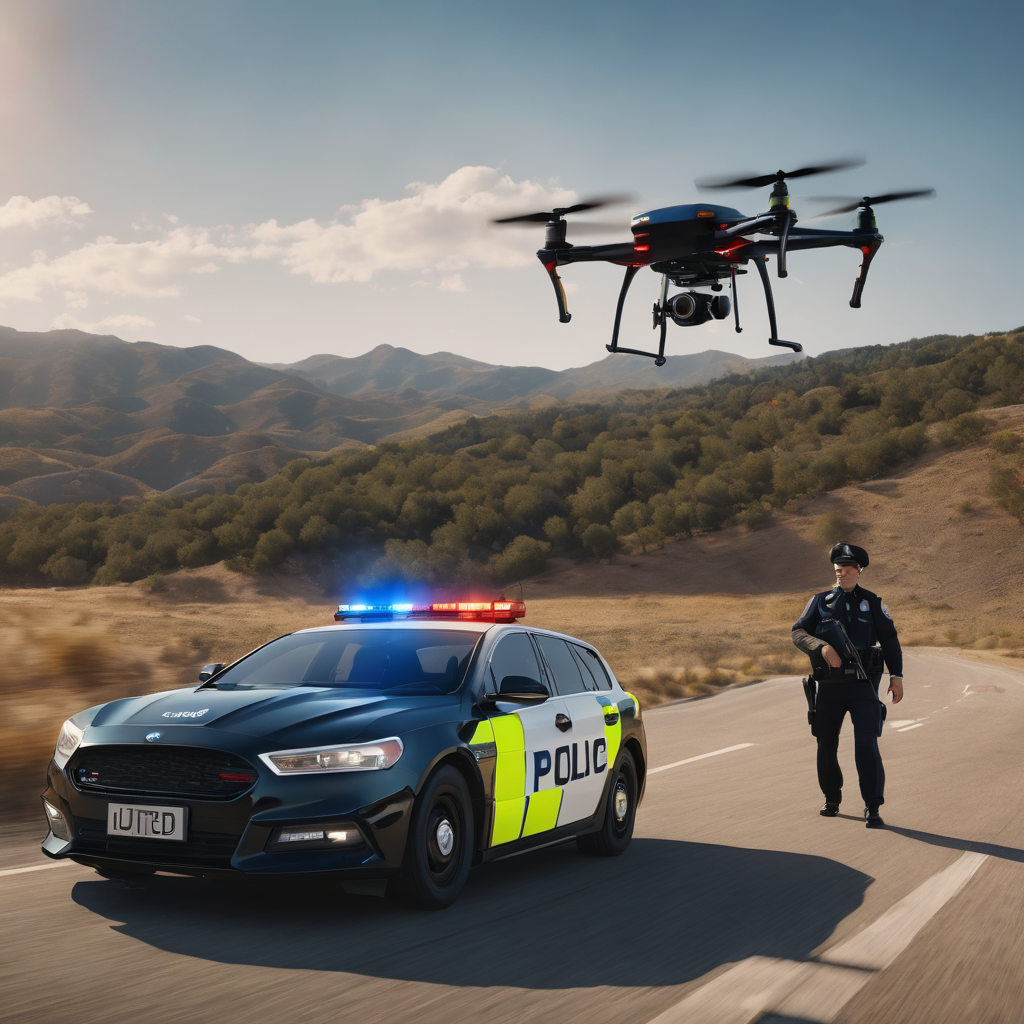
As the reliance on drones continues to escalate in police work, ensuring they can stay in the air for prolonged periods becomes paramount. Flight duration can be the difference between successfully completing a mission and falling short. Given the critical nature of many tasks police drones undertake, such as tracking suspects or search and rescue missions, any additional minute in the air can be invaluable.
Here’s an in-depth look at strategies and best practices to augment drone flight durations:
1. Proper Battery Care and Maintenance
Batteries are the heart of drones, and their care can significantly influence flight times.
- Understanding Battery Chemistry: Modern drone batteries, especially LiPo (Lithium Polymer) batteries, have specific care requirements. Being familiar with their charging and discharging characteristics is crucial.
- Storage Conditions: Batteries should be stored at room temperature in cool, dry places. Extreme temperatures, both hot and cold, can degrade the battery’s efficiency and overall lifespan.
- Balanced Charging: Using a balanced charger ensures that all cells in the battery are charged evenly, promoting longer battery life and preventing potential hazards.
- Avoiding Complete Discharges: While it’s sometimes recommended to do a full discharge for certain battery types, frequently draining a drone battery entirely can shorten its lifespan. It’s best to recharge batteries when they reach around 20% capacity.
2. Flight in Optimal Weather Conditions
Weather plays a pivotal role in drone performance.
- Temperature Impact: Batteries tend to perform best at moderate temperatures. Cold conditions can reduce battery efficiency, while hot conditions can cause the battery to overheat, both resulting in reduced flight times.
- Wind Considerations: While drones are designed to handle mild breezes, strong winds can force the drone to work harder, consuming more power. Planning flights during calm weather or using drones designed for wind resistance can mitigate this.
- Rain and Moisture: Most standard police drones are not designed to be waterproof. Water can damage the electronics and reduce the drone’s efficiency. Always ensure the weather is clear of rain or heavy fog before flying.
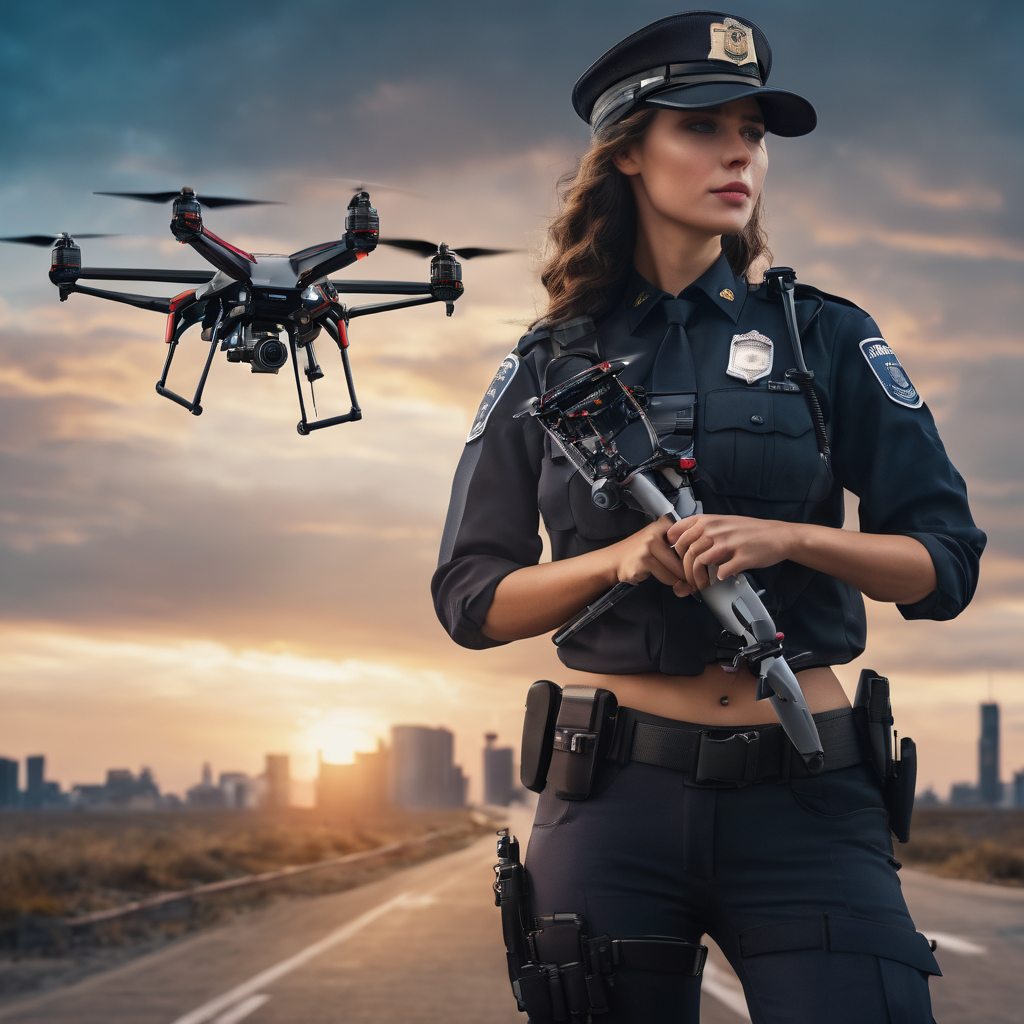
3. Efficient Flight Modes and Practices
Modern drones come with a variety of flight modes optimized for different conditions and tasks.
- Hover vs. Movement: Constant movement, especially rapid changes in direction, can drain the battery faster than hovering. When possible, keeping the drone steady or in a slow, consistent movement can save power.
- Altitude Considerations: Flying at extremely high altitudes can strain the drone’s motors due to thinner air. If the mission allows, maintaining a moderate altitude can be more energy-efficient.
- Use of Assisted Modes: Many drones come equipped with energy-saving or assisted flight modes. These modes use algorithms to streamline the drone’s movement, ensuring minimal energy wastage. Examples include waypoints navigation, where the drone follows a pre-set path, or orbit mode, where it circles a particular point of interest.
Incorporating these strategies can not only extend the single-flight duration of police drones but also enhance their overall operational lifespan, ensuring they remain a reliable tool for law enforcement agencies.
Legal and Ethical Aspects of Police Drone Use
The integration of drones into police work hasn’t been without its controversies and challenges, particularly regarding privacy and surveillance concerns.

Can police use drones without a warrant?
In most jurisdictions, while police can fly drones in public spaces without a warrant, using a drone to survey private property usually requires explicit permission or a warrant.
Permissions needed for drone operations
Operating in certain airspaces, especially near airports or other restricted zones, requires specific permissions or licenses.
Privacy concerns and citizen rights
As with any surveillance tool, drones bring up concerns about individual privacy rights. Guidelines and regulations are continually being developed to balance the needs of law enforcement with the rights of citizens.
Police Drones: Facing Real-world Challenges and Looking Toward the Future
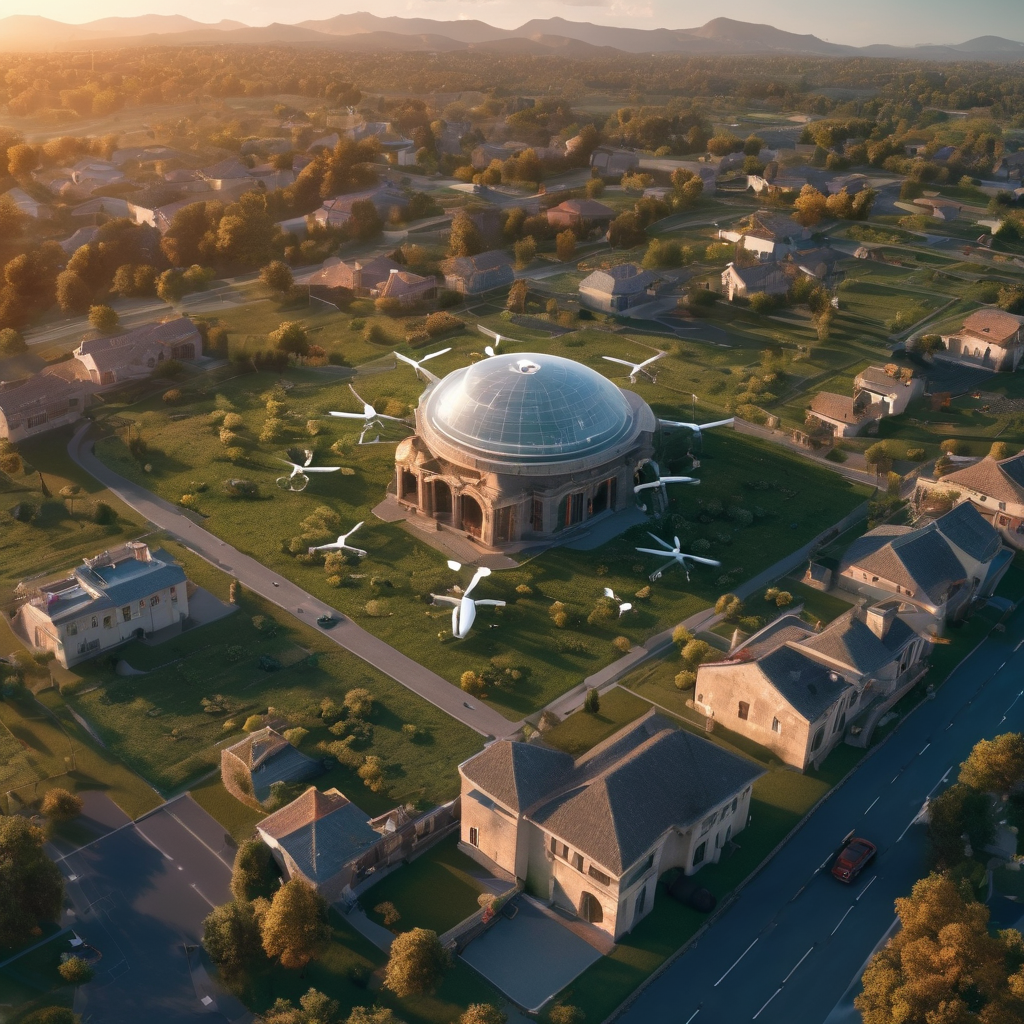
Real-world Challenges and Solutions
In today’s ever-evolving landscape, police drones have emerged as vital tools for various law enforcement operations. But as with any technology, they come with their fair share of challenges, especially when deployed in less-than-ideal conditions.
How do police drones handle adverse weather conditions?
Weather remains one of the primary challenges for drone operations. Rain can affect visibility and damage the drone’s electronic components, while high winds can destabilize the drone, making it difficult to fly. Cold temperatures can also diminish battery performance, reducing flight times.
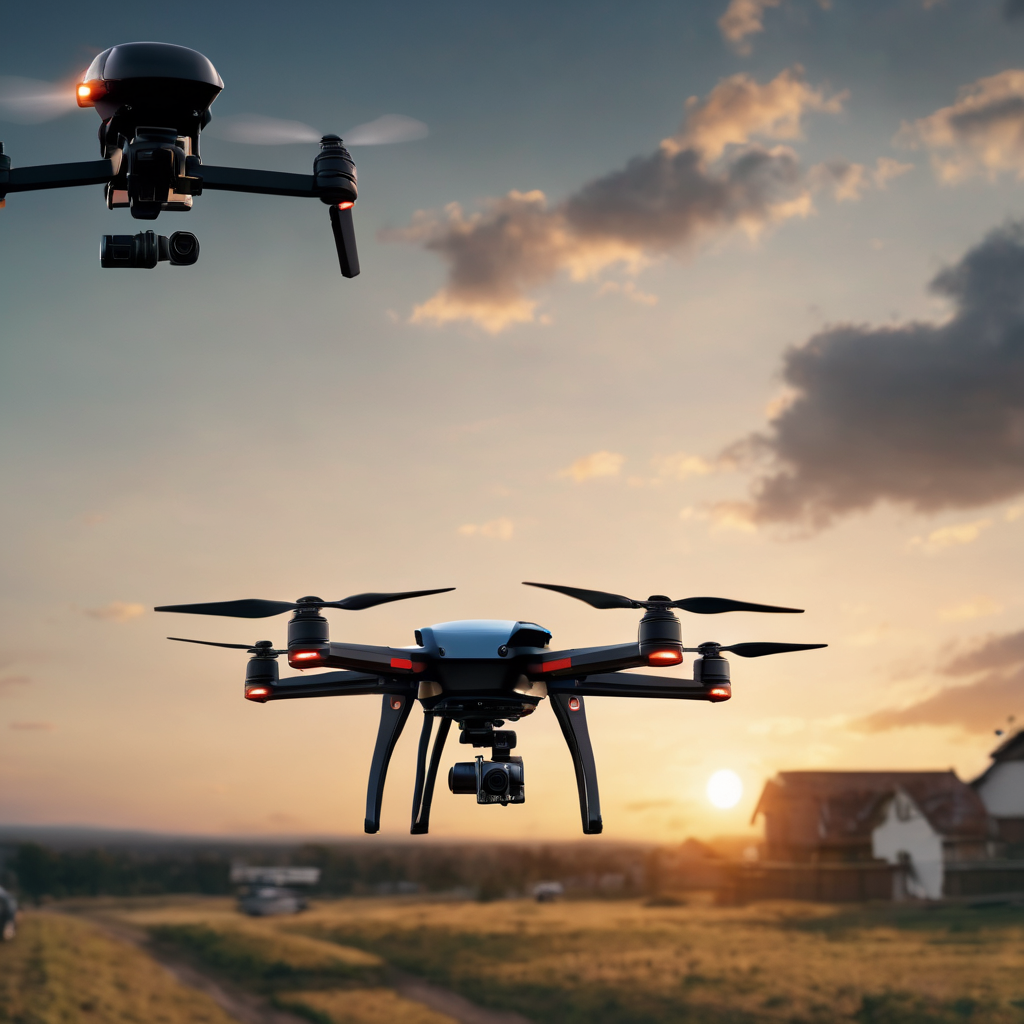
However, advances in drone technology have led to improved weather resistance. Many modern police drones come equipped with water-resistant coatings, allowing them to operate in light rain. Enhanced stabilization systems help maintain balance during windy conditions, and battery insulation techniques are being developed to ensure drones can function effectively in colder climates.
Curious case studies illustrating drone’s flight durations and challenges
Consider the instance in Miami, 2019, when a drone was dispatched to monitor a large public gathering. Despite careful pre-flight checks, unexpected wind gusts forced the drone off-course, causing it to lose power rapidly. Fortunately, its automated return-to-home feature got activated, ensuring it safely returned to its launch point before the battery ran out. This incident underscores the importance of always being prepared for unforeseen challenges, even with the most advanced drones.
The Future Perspective
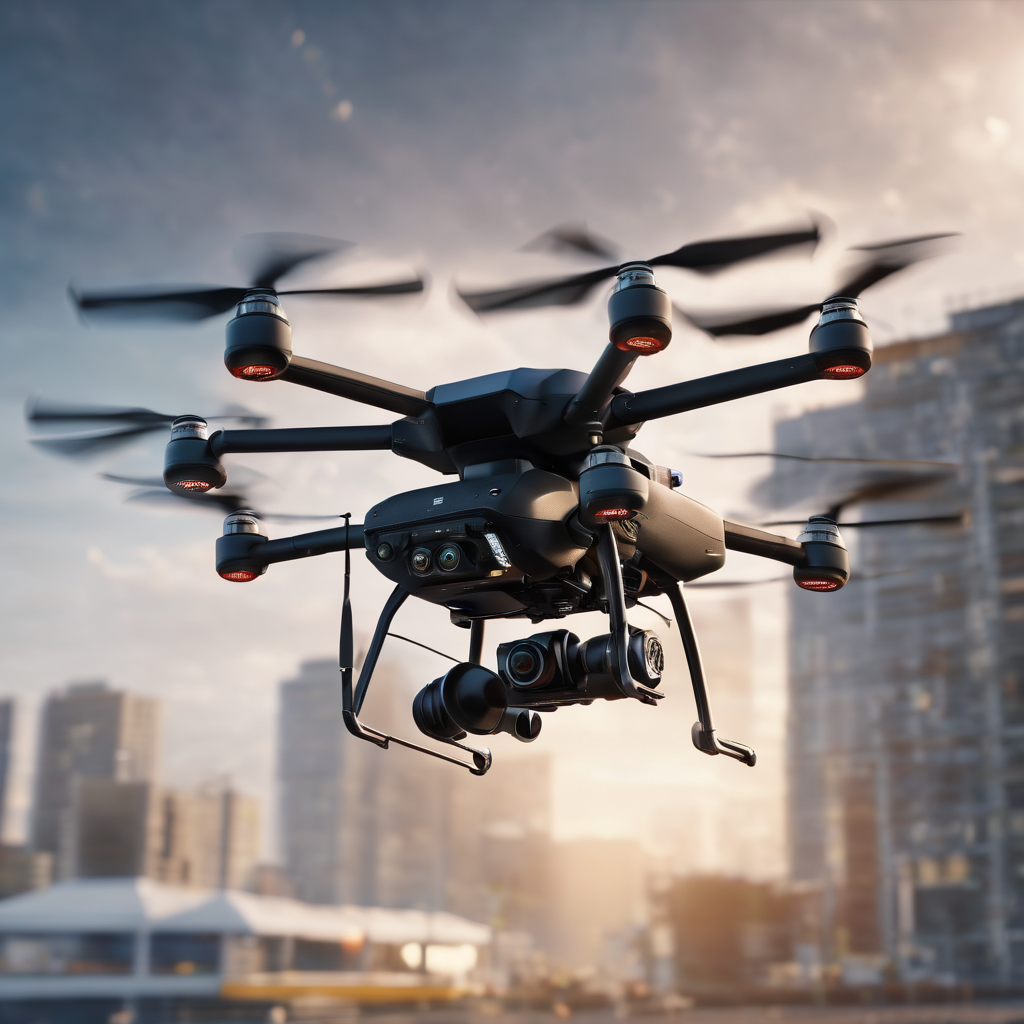
As we look to the horizon, the future of police drones is rife with promise, shaped by rapid technological advancements.
Technological advancements on the horizon
In the realm of drone tech, AI (Artificial Intelligence) integration stands out. Advanced AI can enable drones to recognize patterns, making surveillance more effective. Enhanced battery technologies, like solid-state batteries, promise longer flight times and quicker charge cycles.
How flight time might change in the coming years
With continuous research in battery tech and drone aerodynamics, it’s plausible that the average flight time of police drones will extend beyond the current 20-30 minute average. Innovations like energy-dense batteries and more efficient motors are already in developmental stages.
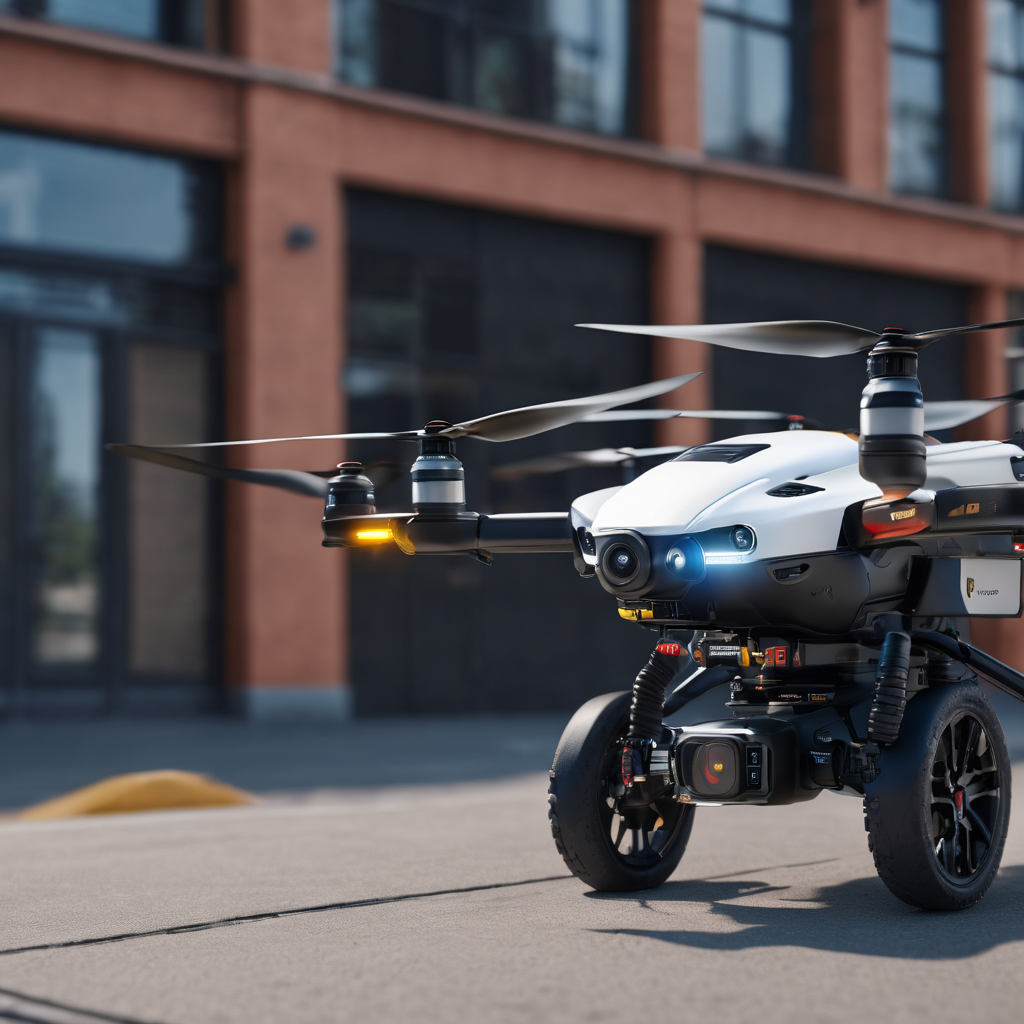
The possibility of drones that recharge mid-air
One groundbreaking concept under exploration is mid-air drone recharging. This can be achieved either through ground-based laser systems directing energy to the drones or through drone-to-drone energy transfers. Such advancements could redefine aerial surveillance, allowing for near-continuous flight operations.
Frequently Asked Questions
How fast can police drones fly?
Most police drones can reach speeds of 40-50 mph, with some high-end models achieving even higher velocities.
What is the range of a police drone?
While ranges vary, many modern drones can operate within a 5-8 mile radius from their controller, depending on the environment and the technology used.
Do police drones have night vision?
Yes, many police drones are equipped with infrared cameras, allowing them to operate effectively during nighttime or in low-light conditions.
Can police drones identify individuals?
With the integration of facial recognition technology, some advanced drones can identify individuals, although this application often raises privacy concerns and is subject to regulatory oversight.
What are police drones?
Police drones, or Unmanned Aerial Vehicles (UAVs), are remotely controlled aircraft used by law enforcement agencies for various operations such as surveillance, crime scene investigation, and traffic monitoring.
What do police drones look like?
Police drones vary in design and size but generally resemble standard commercial drones: multi-rotor aircraft with a central body and camera equipment attached. They may have specific colors or markings to indicate their association with law enforcement.
Can law enforcement agencies use drones?
Yes, law enforcement agencies worldwide use drones, but their use is typically governed by local regulations, which determine when, where, and how these drones can be deployed.
How much is a police drone?
The cost of a police drone can vary widely based on its capabilities and specifications. They can range from $1,000 for basic models to over $30,000 for high-end drones with advanced surveillance systems.
How big are police drones?
Police drones vary in size. Some are compact and can fit in the palm of a hand, while others are larger, with wingspans of several feet.
How high do police drones fly?
Most police drones can fly up to 400 feet above ground level, in line with general drone regulations, although specific heights can vary based on local laws and the drone’s mission.
How fast can police drones fly?
Typically, police drones can reach speeds between 40-50 mph, though high-end models might achieve faster speeds.
How long can police drones fly?
On average, most police drones can remain airborne for 20 to 30 minutes, though flight times vary based on factors like battery capacity and operational conditions.
How far can a police drone fly?
Many modern police drones can operate within a 5-8 mile radius from their controller, depending on the environment and technology used.
How far can police drones see?
With advanced cameras, police drones can capture clear footage from several miles away, depending on atmospheric conditions and camera specifications.
Can police drones see through walls?
No, standard police drones cannot see through walls. However, specific specialized equipment might detect heat signatures or other anomalies through structures, but they don’t provide clear images inside buildings.
Do police forces need special permission to fly drones?
Yes, in many jurisdictions, police forces require specific permissions or licenses to operate drones, especially in populated areas or near sensitive locations like airports.
Can police use a drone without a warrant?
In many areas, police can use drones in public spaces without a warrant. However, for private property surveillance, they often require a warrant or explicit permission.
Do police drones have infrared?
Yes, many police drones are equipped with infrared cameras to facilitate nighttime operations or detect heat signatures.
Do police drones have weapons?
While some military drones are armed, standard police drones in most jurisdictions are not equipped with weapons. They’re primarily used for surveillance and data collection.
What does a police drone look like at night?
Many police drones are equipped with LED lights for visibility, so at night, they might appear as moving lights in the sky. If equipped with infrared, they might be harder to spot with the naked eye.
What does a police drone sound like?
Police drones typically produce a buzzing or humming noise, much like other commercial drones. The sound’s intensity can vary based on the drone’s size and distance from the observer.
How do you spot a police drone at night?
Spotting a police drone at night can be challenging. Look for moving LED lights in the sky and listen for the characteristic drone humming sound. Using binoculars or a telescope can also aid in identification.
Read more Drone Blog
Conclusion
Police drones, despite the challenges they face, have undeniably transformed modern law enforcement. Their capacity to rapidly evolve and adapt promises a future where they’ll play an even more integral role in maintaining public safety. As technology propels us forward, the alliance between drones and the police will undoubtedly strengthen, ushering in a new era of policing.


